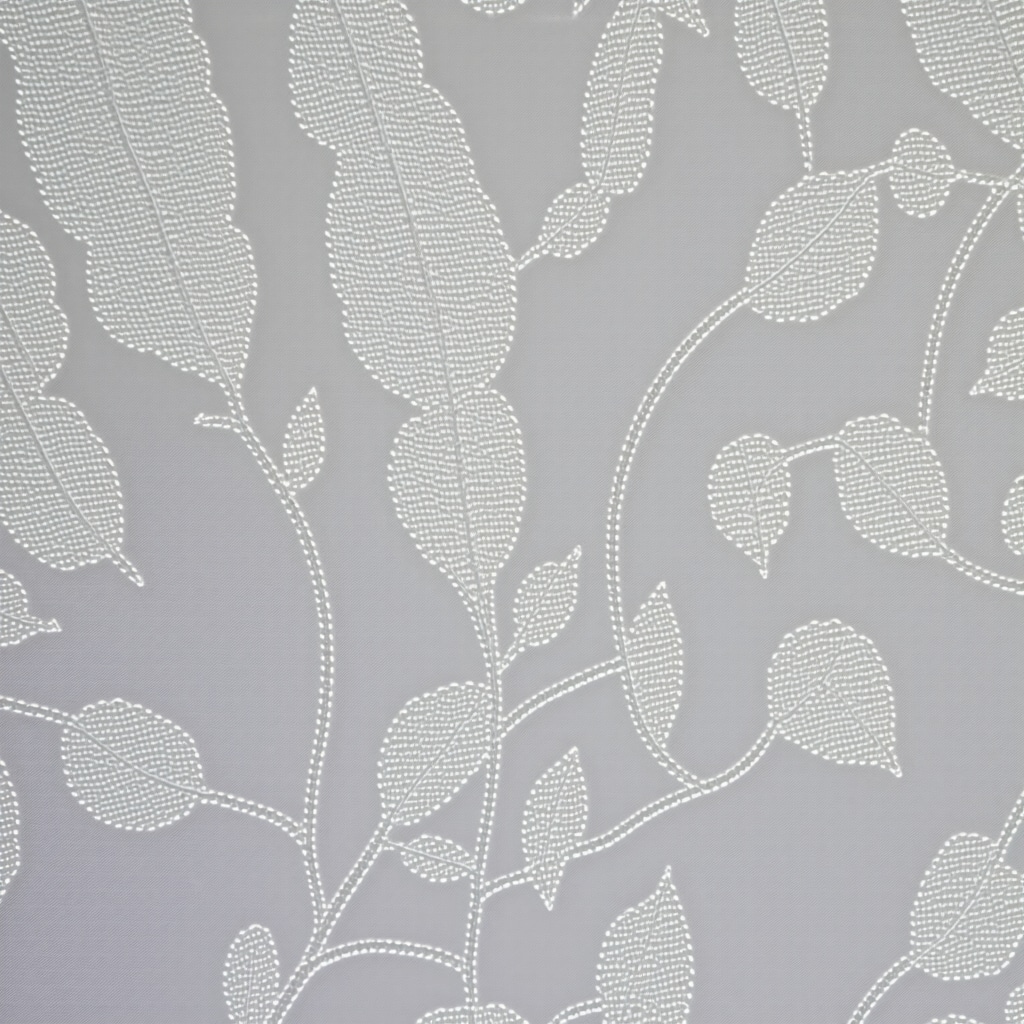Elevating Bridal Elegance Through Expert Wedding Dress Restoration in Tampa
Wedding dresses are cherished heirlooms requiring meticulous restoration expertise to preserve their delicate fabrics and intricate embellishments. In Tampa, professional wedding dress restoration services combine advanced textile conservation techniques and bespoke care strategies to ensure brides’ gowns withstand the ravages of time and environmental factors. This article delves into nuanced methodologies and expert insights that underscore the importance of specialized restoration in maintaining wedding dress integrity.
Advanced Techniques in Wedding Dress Restoration: Beyond Basic Cleaning
Professional restoration transcends conventional dry cleaning by addressing structural repairs, fabric reconditioning, and color restoration. Techniques such as wet cleaning with pH-neutral detergents, delicate hand-stitching of lace and beadwork, and controlled humidity treatments are employed to rejuvenate fragile textiles without compromising their original design. Restoration specialists in Tampa employ these methods to tackle common issues like yellowing, fabric weakening, and seam deterioration, thereby extending the gown’s lifespan significantly.
What Are the Most Effective Strategies for Removing Stubborn Stains Without Damaging Vintage Fabrics?
Stain removal is among the most challenging aspects of wedding dress restoration, especially with vintage or couture gowns. Experts recommend a customized approach based on stain composition—protein-based stains such as blood or sweat require enzymatic treatments, while tannin stains from wine or grass call for specific solvents. Tampa restoration professionals carefully analyze fabric type and dye stability before selecting gentle solvents or oxygen-based bleaches to avoid fiber damage or color loss. This meticulous process often involves spot testing and layered treatments to progressively lift stains.
Integrating Sustainable and Eco-Friendly Practices in Tampa’s Restoration Landscape
Emerging trends in wedding dress restoration emphasize sustainability, incorporating eco-friendly solvents and biodegradable detergents that minimize environmental impact. Tampa-based services increasingly adopt green chemistry principles to align with bride preferences for environmentally responsible care. These practices not only preserve gown aesthetics but also safeguard delicate textile fibers from harsh chemical exposure, promoting long-term preservation.
Preservation Protocols: How Does Professional Restoration Ensure Museum-Quality Longevity?
Restoration experts collaborate closely with preservationists to implement museum-quality storage solutions post-restoration. This includes acid-free tissue padding, breathable garment bags, and climate-controlled environments that inhibit photodegradation and mold formation. Tampa’s restoration services often provide comprehensive preservation packages that encompass both restoration and optimal storage guidance, ensuring the gown remains pristine for future generations.
For brides and collectors seeking in-depth knowledge on bridal gown care, exploring detailed resources like our Bridal Gown Preservation Secrets for Tampa Weddings offers invaluable expertise.
To further deepen your understanding and contribute your professional insights on wedding dress restoration, we invite you to engage with our expert community and share your experiences.
According to the Textile Conservation Journal, precise restoration protocols integrating chemical, mechanical, and environmental controls significantly enhance fabric longevity while maintaining aesthetic fidelity (Textile Conservation Journal).
Exploring the Intersection of Tradition and Innovation in Wedding Dress Restoration
As Tampa’s bridal restoration experts continue to refine their craft, the convergence of traditional textile care and cutting-edge innovations is reshaping how cherished gowns are preserved. Leveraging advancements such as low-impact ultrasonic cleaning and nanotechnology-based fabric fortification, restorers can now achieve superior stain removal and fabric strengthening with minimal intervention. These innovations complement time-honored hand-stitching and fabric analysis, providing a holistic approach to gown restoration that honors both the dress’s history and the bride’s vision.
How Can Emerging Technologies Transform the Future of Wedding Dress Restoration?
Emerging technologies like 3D fabric scanning and AI-driven damage assessment are poised to revolutionize restoration practices. These tools enable precise mapping of fabric weaknesses and stain distributions, allowing restorers to customize treatment plans with unprecedented accuracy. In Tampa, pioneering restoration studios are beginning to integrate these digital diagnostics to enhance restoration outcomes and reduce turnaround time, illustrating a promising future where technology and artistry coalesce seamlessly.
For brides interested in the latest innovations, exploring the Expert Wedding Dress Cleaning Services in Tampa 2025 offers a glimpse into upcoming trends and expert methodologies.
Specialized Conservation for Diverse Wedding Dress Fabrics
Wedding dresses encompass a spectrum of fabrics—from delicate silks and chiffons to intricate lace and tulle overlays. Each fabric type demands unique conservation tactics to prevent degradation and color fading. Tampa professionals emphasize customized cleaning solvents and fabric-specific conditioning treatments. For instance, silk gowns undergo gentle wet cleaning with silk-safe detergents, while lace details receive delicate hand repairs and reinforcement to preserve their intricate patterns. Such bespoke care ensures the longevity and visual integrity of diverse bridal textiles.
Integrating sustainable practices, Tampa’s eco-conscious restorers utilize biodegradable detergents and non-toxic solvents that protect both the gown and the environment. This aligns with broader trends towards green wedding dress care, as detailed in our guide on Eco-Friendly Wedding Dress Care in New Tampa, FL.
Addressing Common Misconceptions: Is DIY Wedding Dress Restoration Ever Advisable?
While the impulse to personally restore a beloved gown is understandable, experts caution against DIY restoration without professional guidance. Inappropriate cleaning agents, incorrect handling of delicate fabrics, or improper storage can exacerbate damage, making professional intervention more complex and costly. Tampa’s seasoned restorers advocate for consultation and professional restoration to safeguard the gown’s structural and aesthetic integrity, especially for vintage or couture dresses.
What Are the Risks and Limitations of Home-Based Wedding Dress Restoration?
Home remedies often overlook critical factors like fabric pH balance, solvent compatibility, and preservation-grade storage conditions. Missteps in these areas can lead to irreversible yellowing, fabric brittleness, or embellishment loss. Tampa experts recommend relying on specialized services that combine scientific textile knowledge with artisanal skills, as outlined in our comprehensive Why Choose Professional Wedding Dress Cleaners in Tampa, FL resource.
According to the American Institute for Conservation, professional textile restoration significantly reduces long-term damage risks by applying tailored chemical treatments and environmental controls (American Institute for Conservation).
We encourage readers to share their restoration experiences or questions in the comments below to foster a community of informed bridal care enthusiasts. Also, consider sharing this article with fellow brides or wedding planners seeking expert insights into wedding dress preservation.
Nanotechnology in Textile Fortification: Revolutionizing Fabric Longevity for Bridal Gowns
Nanotechnology’s integration into wedding dress restoration represents a paradigm shift in textile conservation. By applying nanocoatings composed of silica or titanium dioxide nanoparticles, restorers enhance fabric resistance to UV radiation, moisture, and microbial degradation without altering tactile or visual qualities. Tampa’s experts meticulously calibrate these nanomaterials to interact harmoniously with natural fibers, such as silk and lace, ensuring preservation efficacy while maintaining breathability and flexibility. This advanced fortification minimizes future deterioration risks, extending the gown’s wearability and heirloom potential.
What Are the Practical Challenges and Solutions in Applying Nanocoatings to Historic Wedding Dress Fabrics?
While nanocoatings provide significant protective benefits, their application demands precision to avoid unintended chemical interactions or fiber stiffening. Restoration specialists must conduct extensive compatibility assays, including spectroscopy and electron microscopy analyses, to tailor nanoparticle size and concentration. Tampa laboratories frequently utilize controlled environment chambers to simulate long-term aging and confirm the coatings’ stability. These rigorous protocols assure that nanotechnology complements rather than compromises the gown’s delicate heritage materials.
Complementing nanotechnology, AI-powered diagnostics are empowering restorers with unprecedented insights.
AI-Driven Fabric Assessment: Precision Mapping for Customized Restoration Plans
Advanced AI algorithms process multispectral imaging data to detect micro-damages, subtle discolorations, and fiber density variations invisible to the naked eye. Tampa studios employ machine learning models trained on extensive textile damage databases to predict degradation trajectories, enabling proactive intervention. This granular intelligence informs selection of solvents, mechanical treatments, and reinforcement strategies, optimizing restoration outcomes while minimizing invasive procedures.
By integrating AI diagnostics with human expertise, Tampa’s restoration professionals achieve a synergistic balance of technological precision and artisanal care, setting new industry standards.
Synergistic Effects of Combined Restoration Modalities: Case Studies from Tampa’s Elite Workshops
Recent case studies illustrate how combining ultrasonic cleaning, nanotechnological fortification, and AI-driven damage mapping culminates in superior restoration quality. For example, a 1920s silk gown treated with ultrasonic solvent baths followed by nanoparticle impregnation and AI-monitored drying cycles exhibited enhanced tensile strength and color retention, verified through pre- and post-treatment spectrophotometry and mechanical testing.
Such integrative methodologies underscore Tampa’s role as a nexus of innovation in bridal textile conservation.
How Do Tampa Restorers Balance Technological Innovation with Traditional Craftsmanship to Preserve Bridal Gown Authenticity?
The synthesis of modern technology and time-honored artisanal techniques demands a nuanced approach. Tampa experts prioritize minimally invasive procedures, employing hand-stitching and bespoke fabric supports post-technological treatment to maintain historical authenticity. This duality ensures that while the gown benefits from cutting-edge preservation science, its original craftsmanship and sentimental value remain uncompromised.
For those intrigued by these pioneering methods, our detailed exploration of Innovative Wedding Dress Restoration Techniques in Tampa 2024 offers comprehensive insights.
Moreover, the American Chemical Society highlights the promising role of nanotechnology in enhancing textile durability and resistance to environmental stressors, corroborating Tampa’s advancements (ACS Nanotechnology in Textiles).
We invite restoration professionals and bridal enthusiasts alike to engage further by sharing your perspectives or queries about integrating these advanced modalities into wedding dress conservation.
Harnessing Biochemical Innovations for Enhanced Textile Resilience
Recent advances in biochemical applications have opened new vistas for wedding dress restoration, particularly through enzymatic fabric treatments that selectively target degradation pathways at the molecular level. Tampa restoration experts utilize bioengineered enzymes to gently break down contaminants and oxidation byproducts without compromising fiber integrity, offering a refined alternative to traditional chemical methods. This biological precision not only revitalizes fabric strength but also ensures compatibility with a broad array of historic textiles.
Can Enzymatic Treatments Be Customized for Complex Multi-Fabric Bridal Gowns?
Addressing multi-fabric gowns, especially those combining silk, lace, and synthetic blends, demands tailored enzymatic formulations. Tampa’s specialists develop enzyme cocktails calibrated to the specific substrate sensitivities and stain chemistries encountered, enabling selective cleaning that preserves delicate embellishments and multi-layered structures. This bespoke approach mitigates risks of cross-reactivity and ensures comprehensive restoration efficacy.
Environmental Monitoring Systems: Proactive Preservation through Data-Driven Insights
Integrating Internet of Things (IoT) sensors within storage environments enables continuous monitoring of temperature, humidity, and airborne pollutants, factors critically influencing fabric longevity. Tampa restoration facilities are pioneering these smart preservation systems, which provide real-time alerts and adaptive climate controls. Such proactive environmental management mitigates deterioration risks and facilitates predictive maintenance, marking a paradigm shift in heirloom gown conservation.
Expert Collaboration Networks: Fostering Knowledge Exchange in Textile Conservation
Recognizing the complexity of textile restoration, Tampa’s leading conservators actively engage in interdisciplinary collaborations with chemists, materials scientists, and textile historians. This synergy fosters innovative methodologies and validates emerging techniques through peer-reviewed research. By participating in global consortiums such as the International Association of Textile Care and Management, Tampa professionals remain at the forefront of scientific breakthroughs and best practices in bridal gown preservation.
Leveraging Advanced Spectroscopy for Non-Invasive Damage Assessment
State-of-the-art spectroscopic tools, including Fourier-transform infrared (FTIR) and Raman spectroscopy, facilitate molecular-level analysis of fiber degradation and dye composition without physical sampling. Tampa restoration labs deploy these technologies to precisely characterize damage mechanisms and monitor treatment progress, enabling informed decision-making that minimizes intervention risks.

How Does Spectroscopic Analysis Inform Tailored Restoration Protocols?
By elucidating chemical changes and contaminant profiles, spectroscopic data guides selection of compatible solvents and consolidants, ensuring restoration interventions are chemically harmonious with original materials. Tampa experts integrate these insights to customize treatment sequences, balancing efficacy with preservation of historical authenticity.
Embracing Circular Economy Principles in Wedding Dress Restoration
Innovative Tampa services now incorporate circular economy frameworks, promoting gown upcycling, repurposing, and sustainable end-of-life options alongside restoration. This holistic perspective not only extends the lifecycle of bridal textiles but also aligns with contemporary environmental ethics, offering clients responsible stewardship of their cherished garments.
For further exploration of these sophisticated restoration paradigms and active discourse with industry leaders, we invite you to visit our comprehensive resource hub and contribute your expertise or inquiries.
According to the International Journal of Restoration Arts and Sciences, integration of biochemical treatments and digital monitoring substantially elevates textile conservation outcomes, underscoring Tampa’s pioneering role in this domain.
Expert Insights & Advanced Considerations
Integrating Multimodal Restoration Techniques for Optimal Longevity
Skilled restoration in Tampa increasingly embraces a synergistic approach combining enzymatic treatments, nanotechnological fabric fortifications, and AI-driven diagnostics. This integration not only enhances stain removal efficacy and structural reinforcement but also minimizes invasive interventions, preserving the gown’s aesthetic and historical integrity over extended periods.
Customization is Paramount: Tailoring Treatments to Fabric and Embellishment Complexity
Recognizing the heterogeneity of bridal gown textiles—from delicate silk and lace to synthetic blends—restorers must develop bespoke protocols. This includes selecting enzyme cocktails and solvents that align precisely with fiber sensitivities and embellishment fragility, thereby reducing risks of fiber degradation and color alteration during restoration.
Environmental Control as a Cornerstone in Post-Restoration Preservation
Beyond restoration, maintaining museum-quality storage environments with real-time humidity, temperature, and pollutant monitoring is essential. Tampa’s adoption of IoT-enabled preservation systems exemplifies cutting-edge stewardship that proactively mitigates deterioration triggers, safeguarding gowns’ longevity.
Balancing Tradition and Innovation: The Artisan’s Role in Modern Restoration
While technological advances offer unprecedented capabilities, the nuanced expertise of hand-stitching and fabric analysis remains irreplaceable. Tampa restorers exemplify this balance by applying artisanal craftsmanship post-technology treatment, ensuring each gown retains its unique heritage and sentimental value.
Ethical and Sustainable Practices Are Imperative for Contemporary Bridal Care
Eco-friendly solvents, biodegradable detergents, and circular economy principles are no longer optional but fundamental. Tampa’s restoration services lead in adopting these methods, aligning bridal gown care with broader environmental responsibilities without compromising treatment efficacy.
Curated Expert Resources
- American Institute for Conservation (AIC) – Provides comprehensive guidelines on textile restoration ethics, chemical treatments, and preservation standards essential for professional conservators.
- Textile Conservation Journal – Offers peer-reviewed research on innovative restoration methodologies, including nanotechnology and biochemical applications relevant to bridal textiles.
- International Association of Textile Care and Management (IATCM) – A global consortium fostering interdisciplinary research and knowledge exchange on cutting-edge textile care techniques.
- American Chemical Society Publications – Features detailed studies on nanotechnology integration in textiles, supporting evidence-based advances in fabric fortification.
- International Journal of Restoration Arts and Sciences – Explores biochemical and digital monitoring innovations, providing insights into next-generation conservation strategies.
Final Expert Perspective
Wedding dress restoration in Tampa exemplifies a dynamic fusion of tradition and innovation, where meticulous artisanal skill harmonizes with advanced scientific techniques. This comprehensive approach ensures each gown’s fabric integrity, aesthetic fidelity, and heirloom potential endure through time. Embracing sustainable practices alongside technological advancements, Tampa’s restoration experts set a benchmark in bridal gown preservation excellence. For professionals and enthusiasts eager to deepen their expertise or share insights, exploring the detailed protocols in Bridal Gown Preservation Secrets for Tampa Weddings offers a valuable starting point. Engage with the community, contribute your perspectives, and continue advancing the art and science of wedding dress restoration.


I was genuinely fascinated by the detailed explanation of how Tampa’s wedding dress restoration services merge traditional craftsmanship with cutting-edge technology. The article’s emphasis on techniques like pH-neutral wet cleaning and controlled humidity treatments really highlights how delicate and multifaceted this work is. I once helped a friend recover her grandmother’s vintage silk gown, and even minor missteps caused noticeable damage, which reinforced my respect for professional restoration. The integration of eco-friendly solvents is also encouraging, considering how brides and customers are increasingly mindful of sustainability. One aspect that really stood out is the use of nanotechnology and AI-driven diagnostics; I can see how these innovations could revolutionize restoration by prolonging a gown’s life while preserving its original beauty. However, balancing this technology with the artisan’s touch to maintain historical authenticity must be quite challenging. I’m curious to hear if other readers or professionals have noticed any unforeseen challenges when melding these high-tech methods with traditional hand-stitching practices? Also, for those considering restoration, what are some practical ways to ensure your gown’s unique details are respected throughout this high-tech preservation process?